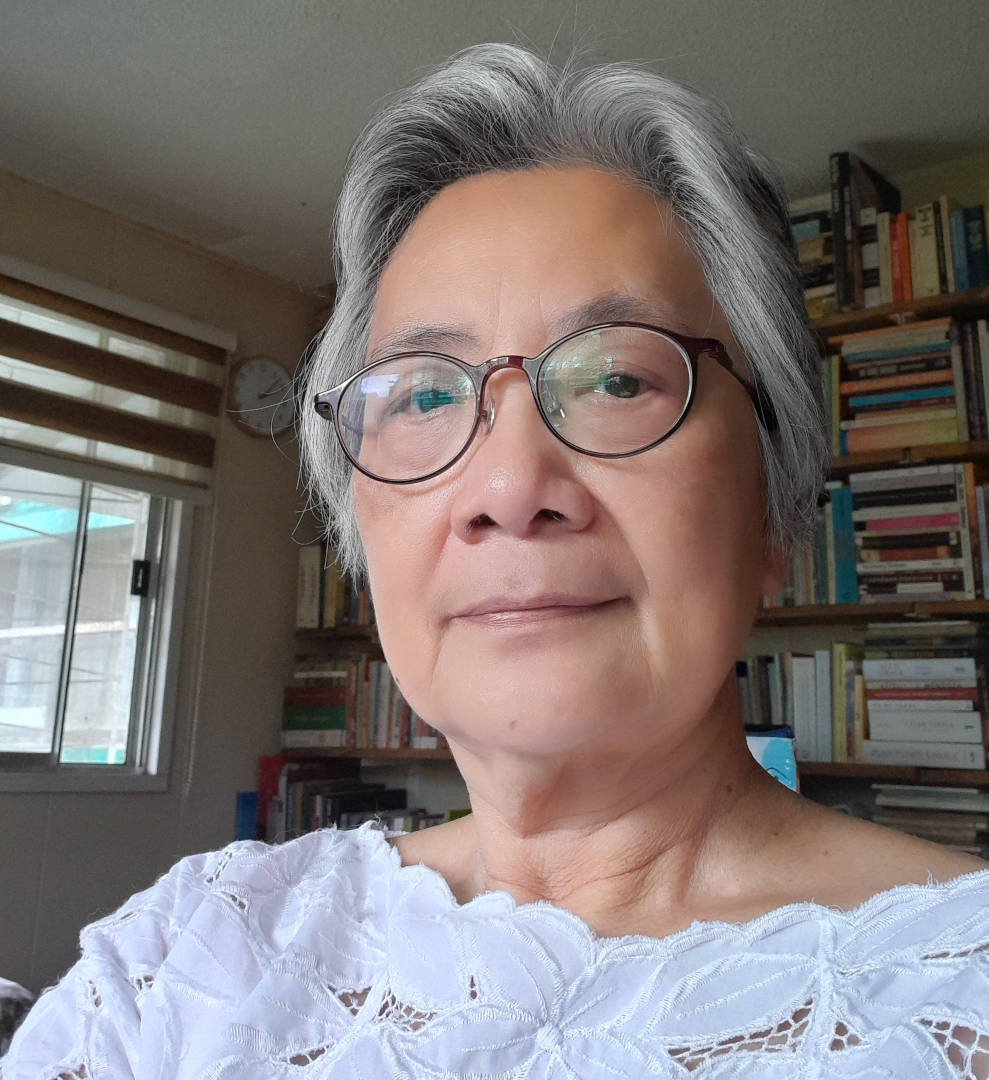Photos by Elizabeth Lolarga
Among the 25 prints of Fara Manuel-Nolasco on exhibit until Sept. 15 at the Darnay Demetillo Art Space of the University of the Philippines Baguio’s College of Arts and Communication is “Everlasting,” a tribute to the highland flower that traditionally serves as a welcome lei to visitors. It looks simple at first glance but upon closer look, the artist’s effort in creating the detailed layers of petals is impressive.
A visual communication graduate of the UP Diliman with a masters in art theory from the same institution, she first was drawn to the power of prints when she saw the works of Die Brucke, the German Expressionist group, in Berlin, Germany in 2006. Showcased then were the woodcut prints that, she said, “shattered my view on how representations could veer away from reality.”
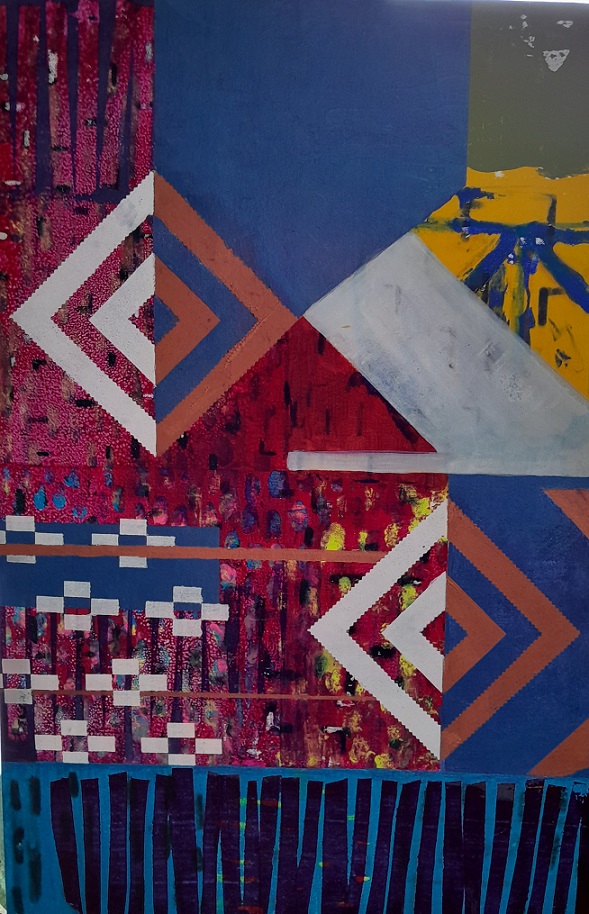
“Ang Lupa ay Buhay,” screenprint on canvas, a collaboration with commercial weaver Nora Duculan
In 2008, when she entered UPB as an instructor together with Manolo Sicat, a multi-media artist, he introduced her to relief prints like rubber cuts. Around that time, she found out about the existence of the Association of Pinoy Printmakers, formerly the Print Association of the Philippines. She took a workshop under distinguished relief printmaker Ambie Abaño who is famed for her mural-size woodcut portraits of women.
Soon, Manuel-Nolasco also held print workshops at UPB covering three methods: silkscreen, relief and intaglio using the etching press that Demetillo used for his classes before he passed on.
She further got curious about printmaking when another colleague, Prof. Grace Subido, showed her relief prints by Demetillo of Baguio landscapes done in the Impressionist style.
The printmaker said, “By Impressionist, I mean what is depicted is not objective reality.”
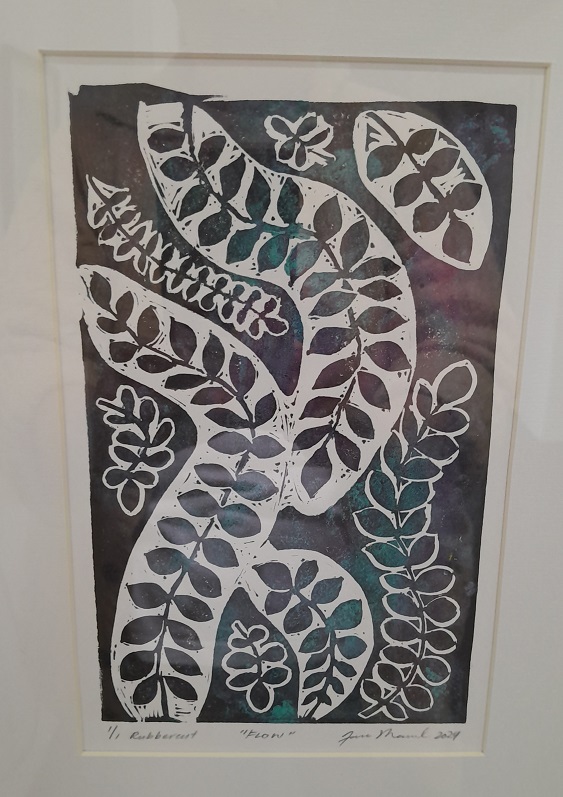
Like Abaño, Manuel-Nolasco pays tribute to women, but she doesn’t show their faces, just their torsos, in an almost abstract manner. She said, “I chose to show the torso to convey womanhood without showing the actual face of the woman.”
Method-wise, she added, she admires Canadian Villia Jefremovas, a retired associate professor at Queen’s University in Ontario and formerly longtime resident of the Cordillera, for “her love of print which is so infectious.” She said Jefremovas encouraged her to explore hybrid forms of printmaking like combination of monoprints and silkscreen, relief and silkscreen.
She credited Benjie Torrado Cabrera for teaching her dry-point etching and the three-dimensional Burin engraving. She also worked with Haruka Furusaka whose unique medium is using soil as ink. Furusaka taught her soil painting and traditional mokuhanga printing, which is relief woodcut, but “you can still achieve wash effect,” she said.
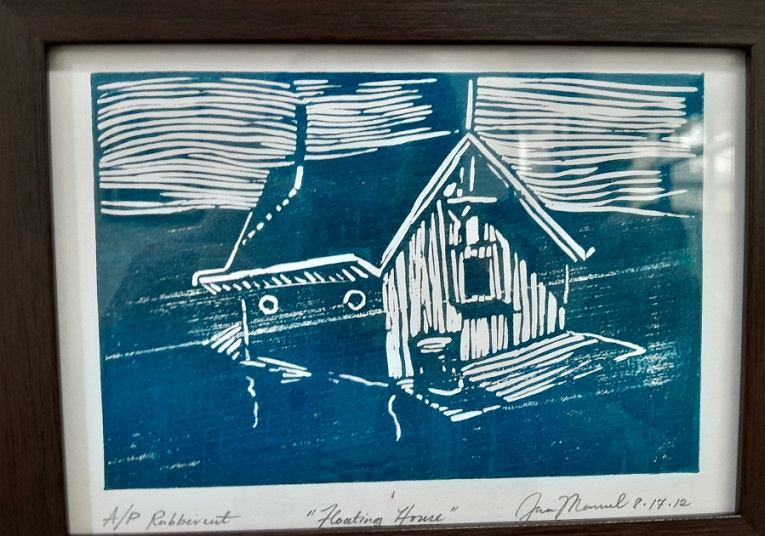
She has also met Asao Shimura, a papermaker and kon’nyaku artist based in Kapangan, Benguet who taught her to experiment with ink and substrates in creating hybrid prints.
Asked why printmaking is her main form of creative expression, she answered, “I like it because in practice it’s methodical and has led me at the same time to break away from method. I’ve experimented with soil prints using my bike’s wheel.” For the latter, she did a performance art in 2013 at the Cultural Center of the Philippines.
She likes prints also because “they are an accessible and approachable medium. I can reach audiences better than having a singular work.”
She continued, “Printmaking is a collective activity. Discoveries are made when you open your studio to visits.”

The title of her exhibition, “Doble Vista,” was something she arrived at with communication colleague Prof. Faye Sta. Maria. Manuel-Nolasco said, “It’s our collaboration—we wanted a feminist twist since a sorority, Sigma Delta Pi, is our beneficiary. We want to amplify the view and voice of women. It’s doble vista because women see spaces differently.”
The sorority signed a contract with UPB Chancellor Joel Addawe to do yearly fundraising exhibits for thesis grants. Five qualified awardees of the grants receive P10,000 each to complete their thesis.
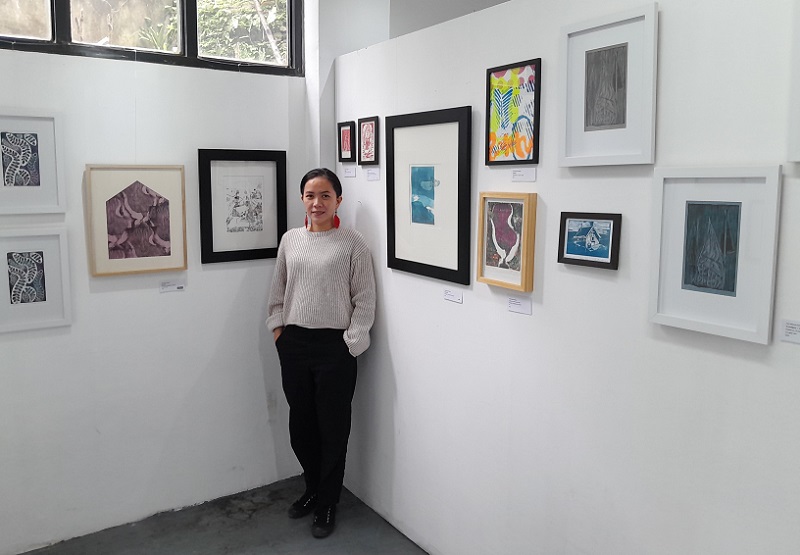
Meanwhile, the artist will continue her discoveries when she pursues her Ph.D. in Creative Arts at Massey University in Wellington, New Zealand beginning October this year.
For inquiries on the prints, email Prof. Sta. Maria at fayestamaria@gmail.com.

